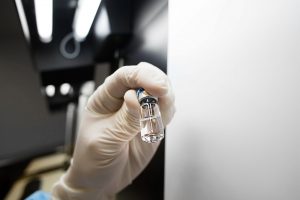TRANSLATIONAL PRODUCT DEVELOPMENT
Integrated Product Development Solutions to Accelerate to the Clinic

Our Translational Approach to Product Development
Directing a promising therapy or vaccine from the research bench to the clinic and beyond demands a sustained, multidisciplinary effort. Bringing science, process technologies and clinical designs together to achieve product efficacy and safety objectives – all while meeting stringent regulatory requirements – is never cheap nor fast, and the path is often filled with shifting targets and unforeseen obstacles.
At ABL, we understand what it takes to translate your product from a promising idea to a successful candidate. Your program may need:
- A feasibility assessment
- Total product development plan (PDP)
- Relevant proof-of-concept and safety data
- A robust manufacturing process
- Credible clinical data
Our Translational Sciences staff work hand-in-hand with government and industry key opinion leaders (KOLs) to develop novel biomedical products. The first step is listening to our clients’ needs: the technical and pipeline objectives, timelines and budget requirements. We then put our experience to work creating PDPs, preclinical study plans and analytical plans that serve as roadmaps to advance products through preclinical and clinical phases.
Once the project is underway, ABL’s Project Manager (PM) works on a daily basis with all project stakeholders, directing critical communications between your team, ABL staff, subcontractors and other external service providers. The PM is tasked with ensuring the project is on time and on budget, as well as facilitating solutions when challenges arise.
Spotlight on Feasibility Assessments and Product Development Plans (PDPs)
 Product development planning and feasibility analyses are used as critical planning tools to drive setting priorities within organizations and making decisions on funding process development, manufacturing, analytical development, and preclinical studies throughout the development of biopharmaceutical products.
Product development planning and feasibility analyses are used as critical planning tools to drive setting priorities within organizations and making decisions on funding process development, manufacturing, analytical development, and preclinical studies throughout the development of biopharmaceutical products.
Feasibility assessments are a critical tool for project evaluation and planning throughout the product development lifecycle. This activity can identify product development gaps as well as outline activities required to address them. In addition, a feasibility assessment can identify regulatory hurdles and other potential risks to development. Identification of these gaps and risks at the outset of each phase of development is critical before embarking on progressively more expensive stages of development. Assessing feasibility is an iterative process of generation and evaluation of the requirements of product development and the resources required. At the conclusion of this effort, all gaps and risks should be identified and clear developmental pathways should be described, enabling informed choices to be made about whether or not development is warranted. Ultimately, the feasibility assessment serves as a tool for risk identification and mitigation and can be used to focus resources on the most promising candidate products.
In concert with the feasibility analysis, a PDP can be developed after the analysis of all factors affecting development is complete.
A generic PDP outline is shown below, in brief. For each section, Risk/Gaps are identified and Mitigation strategies detailed. The content can be altered to fit your needs.
- Executive Summary
- Target Product Profile
- Background of Indication, Current Treatment, and Rational for Development
- Current Product Description/Competitive Landscape
- Current Process and Analytical Development
- Current Pre-Clinical Animal Studies Using the Current Product
- Strategy / Plan overview with Strengths / Weaknesses / Threats / Opportunities (SWOT) and Recommended Strategies (TOWS Matrix)
- Proposed Process Development Plan
- Proposed Analytical Development
- Proposed cGMP Manufacturing Plan
- Proposed Preclinical Efficacy and Toxicology Studies
- Proposed Regulatory Strategy
- Proposed Clinical Development
 GOVERNMENT PARTNERING BROCHURE
GOVERNMENT PARTNERING BROCHURE
Download ABL’s brochure describing government partnering services


